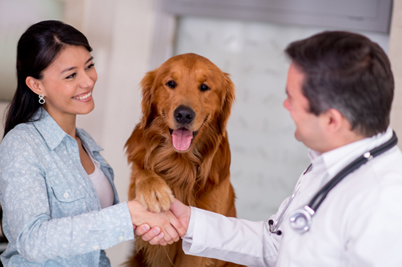Nonverbal Communication – Body Language
Creating a Good First Impression
Nonverbal cues in body language work best in a veterinary set up. As a veterinary professional, a positive and sympathetic body language can help you in supporting your clients and build rapport.
Nonverbal Communication – Body Language
Demonstrating Empathy through Body Language
Some veterinary practitioners and counsellors are naturally empathetic. However, some tips can improve how you display empathy.
- Nod whilst listening
- Smile where appropriate
- Lean towards the person you are speaking with to show that you are engaged in the conversation
- If you think your customer would be comfortable, a gentle touch on the arm or shoulder shows compassion





